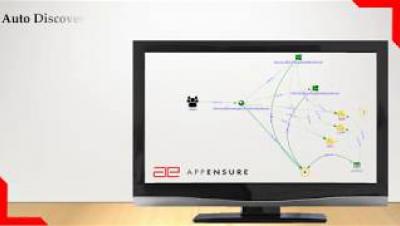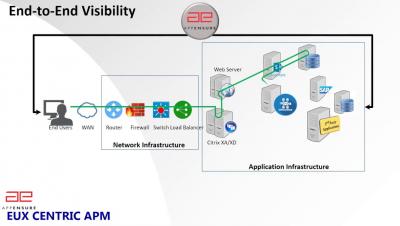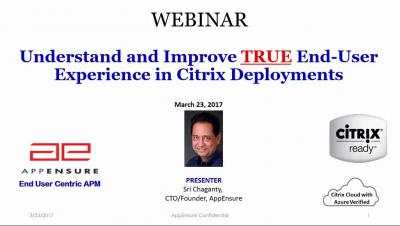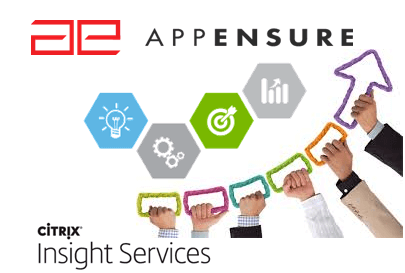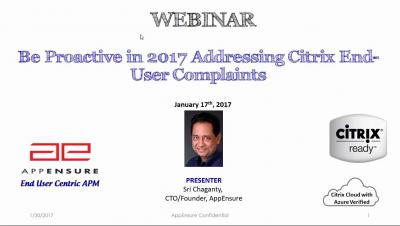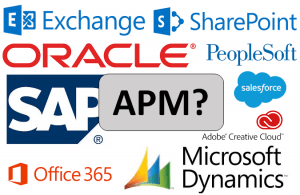Operations | Monitoring | ITSM | DevOps | Cloud
AppEnsure
Unprecedented Visibility of Citrix Delivery
AppEnsure Overview
Announcing New Release 6.0
AppEnsure is adding more new features upping the tool’s value with its latest release of the software, for end user centric application performance management in Citrix deployments. We are very pleased to announce Release 6.0, evolving the solution to address service level guarantees to end users for published applications and virtual desktops.
Delivering Impressive End User Experiences in Citrix Xen Upgrades - But not as an afterthought!
Citrix XenApp and XenDesktop have been around for many years, delivering IT Ops an essential ability to centrally manage and control costs of App and VDI delivery. The move to a new architecture in Xen 6.X accelerated deployments and now the move to the latest improvements in Xen 7.X is in full swing. We see this occurring globally, with generally good results.
The End-User Experience Enigma: The Continuing Performance Puzzle Saga in Citrix Environments
With over 400K customers, Citrix is defining the digital workspace that securely delivers Windows, Linux, web, SaaS apps, and full virtual desktops to any device, anywhere. Citrix administrators at all these customers are the frontline for addressing dissatisfied end users of those applications and desktops. Unfortunately, even today, understanding real end-user experience in Citrix environments remains an unsolved puzzle.
AppEnsure's Service Level Driven Advantages over Citrix Insight/Director
There has been much discussion about the new parameters that Insight/Director provide with ICA Round Trip Time (RTT). The general perception is that ICA RTT provides the end-to-end response time for applications or desktops delivered. This is NOT correct. Many times the application or VDI published will access the backend infrastructure that supports the application or VDI. The back-end infrastructure response time is not part of the ICA RTT.
Be Proactive Addressing Citrix End User Complaints AppEnsure Webinar Jan17
APM for Vendor Provided Business Critical Enterprise Applications
Traditionally, Application Performance Management (APM) is usually associated with solutions that instrument application code. There are two fundamental limitations with such associations. If instrumenting the code is what APM is all about, then APM is applicable only to homegrown applications for which access to code is available.


